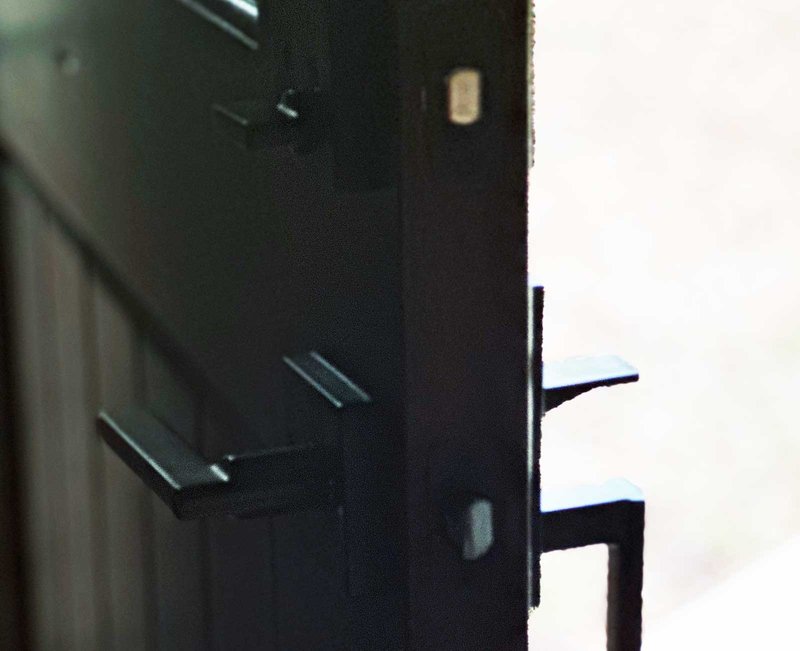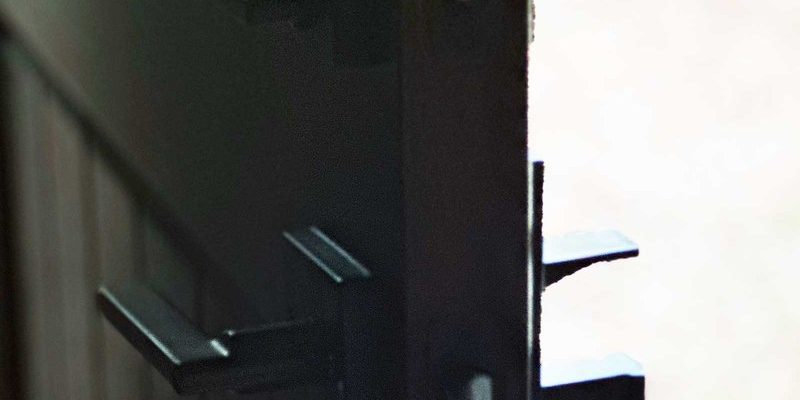
Here’s the thing: fixing a door’s latch isn’t always the end of your troubleshooting journey. Sure, brands like Schlage, Kwikset, and Yale make sturdy locks and latches, but even after those feel-good repairs, a door that slams or creaks can drive you nuts. Let me explain why this happens, what you can check next, and how to get your door closing quietly, without needing a professional (or pulling your hair out).
Why Your Exterior Door Still Makes Noise After a Latch Fix
You might be wondering, “If the latch finally works, why isn’t my door peaceful and quiet?” Honestly, fixing the latch is just one piece of the puzzle. Doors are surprisingly complex — little things like weatherstripping, hinges, or even the door frame itself can keep causing trouble. Imagine your door as a team: if one player is off, the whole thing can go sideways.
Most exterior door noises come from either something being too tight, too loose, or rubbing the wrong way. After a latch repair, you might accidentally bump the alignment, or maybe an old hinge got jostled and needs attention. Sometimes, that satisfying “click” of the latch just means the lock lines up — not that everything around it is working quietly. Other times, weather stripping or the strike plate might be involved, especially if your door fits like two puzzle pieces that never really wanted to be friends.
If this sounds overwhelming, don’t worry. You don’t need to be a pro or know the “code” for fixing every door. With a step-by-step approach, you can track down what’s actually making your door noisy — and finally get some peace and quiet.
Checking Door Alignment and Fit
First things first: after a latch fix, it’s easy for the overall alignment to shift even a little. You might not think much of it, but even a millimeter off can make your door noisy or hard to close smoothly. Open and close the door a few times. Watch for the spot where it starts to catch, drag, or make noise. Does the edge rub against the frame? Is there a gap that wasn’t there before?
Here’s an easy test: close the door slowly and watch how the latch meets the strike plate. If the latch hits high or low or needs a push to “catch,” then your door is out of alignment. This is super common after any kind of repair, especially if you used even a little extra force while working.
If the door scrapes the threshold or the top of the frame, it could be that your hinges are loose, warped, or need adjustment. Get up close and look for shiny spots where the paint or wood has been rubbed away — that’s often a dead giveaway of rubbing. If you spot a gap that’s wider at the top or bottom, your door may have warped or the weather has changed its fit.
Sometimes, all you need is to tighten the hinge screws. Other times, you might need to remove the door, adjust the hinges, or add a thin shim behind one of the hinges to “reset” the alignment. Take your time — patience here really pays off.
Examining the Hinges for Noise and Wear
Hinges might seem boring, but they’re often the true culprit behind a door that won’t close quietly. After wrestling with the latch, a loose or dry hinge can start making itself known with squeaks, clicks, or even a metallic clunk as you open and close the door.
Start by listening: does your door groan or squeal when you move it? That’s nearly always a hinge begging for attention. Sometimes, the door will “pop” or shift as it closes — another sign the hinge pins aren’t sitting right. If you’ve got old, painted-over hinges (especially on heavy, steel-clad exterior doors from brands like Andersen or Pella), they’re more likely to bind up.
Here’s a quick way to quiet things down:
- Use a screwdriver to gently tighten each hinge screw. If the screws just spin, they might be stripped — you can fix this by using a longer screw or a wood plug.
- Lubricate the hinge pins. A few drops of multipurpose oil (not WD-40 — that’s more for cleaning) usually does the trick. Open and close the door a few times to work it in.
- If the squeak sticks around, you may need to pull the hinge pin, clean it off, and lube it before tapping it back in.
Even if your latch works, noisy hinges can make a quiet close impossible. Think of hinges as the “battery” powering the door’s smooth swing — if they’re drained, nothing else works right.
Inspecting the Strike Plate and Latch Alignment
Let’s talk about the spot where the latch meets the door frame — that little metal plate is called the strike plate, and it’s a bigger deal than most people realize. If the latch doesn’t slide smoothly into the strike plate, it can click, chatter, or cause the door to bounce back open slightly, especially after a recent repair.
Check if the latch lines up perfectly with the hole in the strike plate. If it hits too high, too low, or at an odd angle, the door might make a “chucking” sound or need a hard shove to close. Over time, vibration (or even slamming the door a few too many times) can wiggle the strike plate out of place. Sometimes, the screws work loose, which throws off the whole alignment.
Here’s what to try if you spot a problem:
- Loosen the strike plate screws and nudge the plate up, down, or sideways until the latch fits without scraping or forcing.
- If the hole is too small, use a metal file to widen it just a touch. Go slow — you can always remove more, but you can’t put it back!
- After adjusting, retighten the screws and test the door several times, checking both the sound and the feel.
Sometimes, the fix is as simple as a tiny nudge. If not, you might need to “reset” the strike plate, much like “resetting” a remote or troubleshooting a stubborn device.
Addressing Weatherstripping and Compression Seals
Weatherstripping is like your door’s finishing touch — it blocks drafts, dust, and noise. But it can also be the sneaky reason why your freshly latched door won’t close without a thud or a rattle. If you replaced the latch but the door feels too tight (or too loose), blame the weatherstripping or the rubber compression seals along the jamb.
Here’s how to check:
- Look for torn, flattened, or missing weatherstripping. If the seal is too thick, the door will resist closing, then “snap” shut with a bang.
- If the stripping is gone or worn thin, you’ll get rattling and drafts that make the door noisy when wind hits it.
- Run your hand around the edge of the closed door — does it feel even, or are there big gaps?
If you spot a problem, replacing weatherstripping is usually a quick fix. Just pull off the old stuff, clean the area with mild soap and water, and press on a new strip. Options include foam tape, felt, or vinyl — just match the type to your door brand (Kwikset, Schlage, and others often use “universal” weather seals).
Tweaking the weatherstripping is like fine-tuning a remote’s code — a tiny adjustment makes a world of difference.
Identifying Door Frame and Threshold Problems
Sometimes, the real problem isn’t the door itself — it’s the frame or threshold. After fixing a latch, the newly aligned hardware can suddenly make other old issues more noticeable. Maybe your frame is warped from years of weather, or the threshold has settled over time. This causes the door to hang crooked or hit unevenly, making a quiet close almost impossible.
Here’s what to look for:
- Check if the top or bottom of the door hits the frame before the latch catches. This usually means the frame is out of square.
- Place a carpenter’s square or even a sturdy book along the edge to spot unevenness.
- Feel for “high spots” or humps in the threshold that might catch the door as it swings.
If the problem is minor, you might be able to reset the threshold or gently sand down sticky spots. But if your frame is badly warped, you may need to call in a pro for a full reset — kind of like when a remote just won’t pair, no matter how many times you try.
When to Replace Parts vs. Readjust
You might be wondering, “How do I know if I should tweak something… or just swap it out?” Honestly, it depends on what you find. If your hinges are rusty or loose even after a reset, or the latch keeps sticking no matter how well you align it, it’s smart to replace those parts. Brands like Schlage and Kwikset sell affordable replacement kits that can save you hours of frustration.
On the other hand, if the door closes pretty well but just needs a gentle nudge or a quieting touch, small tweaks usually get the job done. Tighten a hinge, move the strike plate, update the weatherstripping — it’s amazing how one little fix can bring everything back in sync.
Here’s a handy rundown:
- Replace hardware if it’s bent, broken, or stripped — especially if you hear grinding, scraping, or feel resistance when closing.
- Readjust if the door just feels “off” but nothing looks damaged. A screwdriver and a few minutes can work wonders.
- For big problems (warped frame, major misalignment), don’t be afraid to get a professional’s help.
If you’re feeling stuck, remember: even pros have to troubleshoot and reset more than once to get things perfect.
Preventing Future Door Closing Noises
After all this work, nobody wants to repeat the process any time soon. The good news? Most door noises can be prevented with a little bit of regular maintenance. Here’s what actually helps:
- Check your hinges every few months. Give them a squirt of oil, snug the screws, and make sure nothing’s working loose.
- Test the latch and strike plate. If the door starts to “catch” or you hear new noises, make tiny adjustments before things get worse.
- Inspect weatherstripping yearly. Replace sections that are cracked, peeling, or missing for the quietest close and a tight seal.
- Keep an eye on your door frame and threshold, especially after storms or big changes in weather. Even the best doors can shift slightly from temperature and humidity.
Think of it like keeping a remote’s battery fresh and the code synced — a little attention saves a lot of headaches later.
Wrapping Up: Finding the Real Fix for a Noisy Exterior Door
Honestly, a door that won’t close quietly can feel like one of those endless house problems — but with the right troubleshooting steps, it’s almost always fixable. Whether your Schlage latch finally locks but the door still slams, or your Kwikset feels “off” after a quick repair, chasing down the details is worth it.
Start by checking your alignment, hinges, strike plate, and weatherstripping. Go slowly, and don’t be afraid to make tiny adjustments or even reset things a couple of times. If you run into bigger issues, like a warped frame, replacing parts or asking a professional is the smart call.
Remember: even after a latch fix, a truly quiet door is the sum of lots of tiny details working together. A little troubleshooting now means you (and your neighbors) can finally enjoy the peace and quiet you were after in the first place.
